Salt Beef Sous Vide: Juicy, Tender Brisket Made Easy
When it comes to transforming a tough cut of beef into something deeply savory and impossibly tender, salt beef sous vide is your ace in the hole. By combining the magic of brining with the precision of sous vide cooking, you get bold flavor and that fall-apart texture we all crave. In this guide, I’ll walk you through everything—my personal story, salt ratios, cooking times, and answers to questions like “Should you salt beef before sous vide?” If you’ve ever struggled with dry, chewy brisket, this is your turning point. Let’s dive into a method that’s slow, steady, and always worth it.
The Story Behind My Salt Beef Sous Vide Journey
There’s something sacred about salt beef in my family. Growing up in Chicago, we didn’t always call it “corned beef,” even though that’s what it technically is. We just called it “Dad’s weekend project.” He’d pull out a thick slab of brisket, mix up a heavy salt brine in a plastic bucket, and stash it in the back of the fridge like it was a secret. That meat would sit there for days, soaking up flavor, while we waited. The wait was brutal—but the reward? Worth every minute.
Years later, when I discovered sous vide, I knew I had to revisit that memory—but with a modern twist. The results blew me away. The precise temperature control gave me all the tenderness I wanted, but without boiling the life out of the meat. Salt beef sous vide changed the game for me. It gave me the power to recreate that childhood magic, but with less guesswork.
If you’ve already tried dishes like sous vide scallops with lemon butter sauce or even something adventurous like scallops sous vide frozen, this one will feel familiar—gentle heat, maximum payoff. Salt beef sous vide delivers on everything: flavor, tenderness, and consistency. And the best part? It’s surprisingly easy to pull off, even if you’re just getting started.
Whether you’re prepping for St. Patrick’s Day or just craving an old-school sandwich on rye with mustard, salt beef sous vide offers unbeatable results. And don’t worry—we’ll cover all the important details like salt-to-meat ratios, ideal temps, and even what Gordon Ramsay thinks about the method (spoiler: he’s come around to it).
Preparing Salt Beef for Sous Vide
Choosing the Right Cut of Beef
When it comes to making perfect salt beef sous vide, your starting point matters—a lot. Brisket is the go-to cut for good reason. It’s full of connective tissue that breaks down beautifully during a long cook. But you can also use other cuts like navel or even silverside (a popular pick in the UK). The key is fat content: you want enough marbling to keep the meat moist but not so much that it overwhelms the brine.
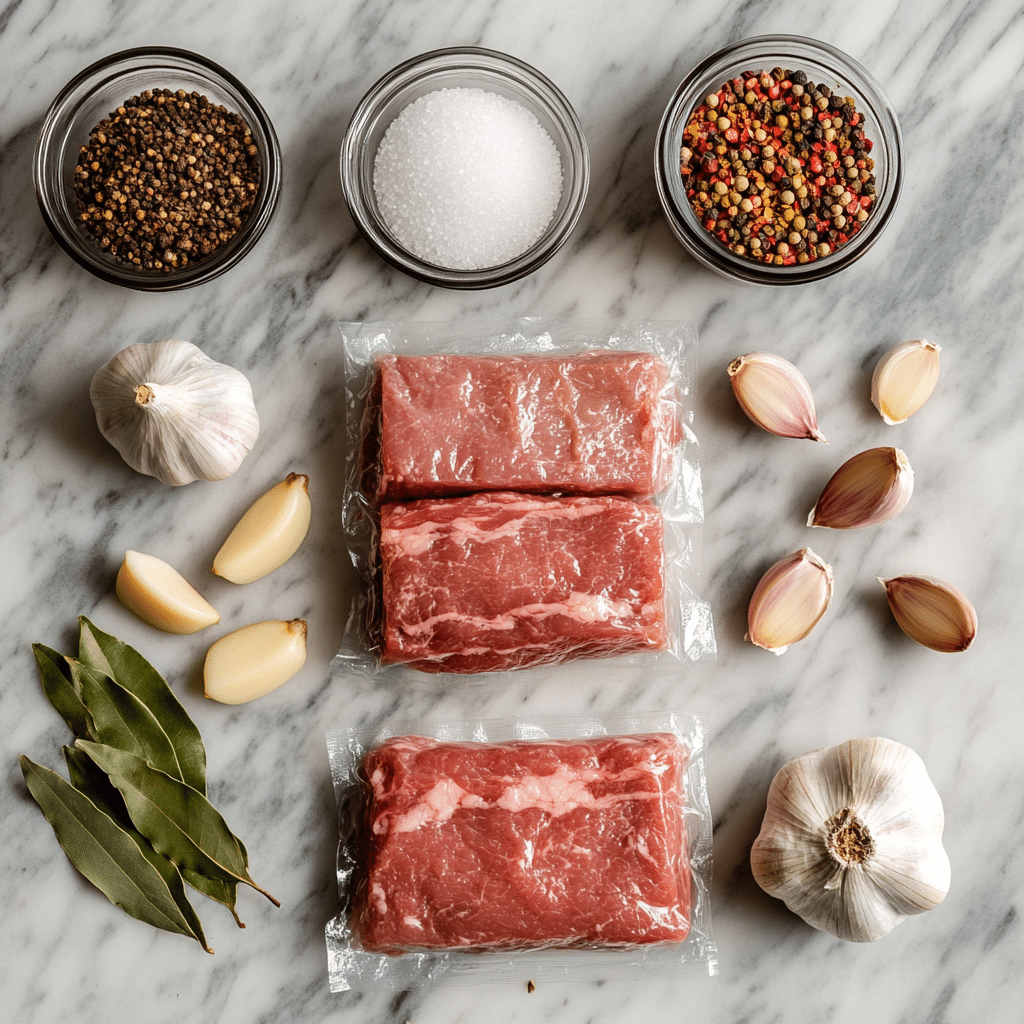
Before sealing that brisket in a bag, you’ll need to brine it. The traditional method takes about 5–7 days in a fridge, but it’s worth every second. For a good brine, use kosher salt, pink curing salt (Prague Powder 1), sugar, garlic, coriander, mustard seed, bay leaves, and black peppercorns. Keep everything submerged—using a weight if needed.
The general salt-to-water ratio for the brine is 1 cup kosher salt per gallon of water, but if you’re curious about salt-to-meat ratios for sous vide cooking itself, you’re looking at roughly 1.5%–2% of the meat’s weight in salt for a dry-brine alternative. Either way, the salt beef becomes deeply seasoned and tender when cooked properly.
As someone who’s experimented with cowboy butter and flavor-forward dishes like sinigang, I can tell you: brined meat is all about balance. Don’t rush it.
Vacuum Sealing and Prepping the Bath
After your meat has had its salty spa treatment, rinse it well. Pat it dry with paper towels—excess moisture dilutes flavor in the bag. Place the meat into a vacuum-seal bag along with aromatics like garlic, bay leaves, or even a clove or two. Seal it tightly.
Set your water bath to 135°F (57°C) for a tender, sliceable result, or 155°F (68°C) if you want that traditional flake-apart texture. Time? Go low and slow—48 to 72 hours depending on how firm you like your beef.
While it bathes, you’ll have plenty of time to prep sides or even whip up something sweet like churro cheesecake to round out the meal.
Cooking and Finishing Your Salt Beef Sous Vide
Timing and Temperature Tips for Perfect Texture
Once your salt beef sous vide is sealed and seasoned, the magic begins. This method’s strength lies in its precision, allowing you to control exactly how tender your beef becomes. For that classic, deli-style texture, set your water bath to 155°F (68°C) and cook for 48 hours. Prefer your salt beef sous vide a little firmer, ideal for slicing thin across the grain? Go for 135°F (57°C) and extend the cook to 72 hours.
The beauty of salt beef sous vide is how it transforms even tough cuts into something incredibly tender. With traditional methods, overcooking is a real risk. Here, you’re in full control. Sous vide holds the meat at the ideal temperature, allowing collagen to break down slowly without drying it out. That’s why, no matter your preference, salt beef sous vide delivers a consistent result every time.
Wondering when it’s “done”? Technically, salt beef is safe to eat once it hits 145°F internally, but sous vide allows you to maintain a safe temp while transforming texture over time. That’s the real secret behind perfectly cooked salt beef sous vide.
While it bathes in warm water, it’s a great time to prepare sides—or if you’re feeling adventurous, try out a dessert like pinon ice cream to complete your meal. Salt beef is hearty, so a light and nutty dessert balances things well.
Searing and Serving: Bringing It All Together
When the cooking time ends, your salt beef sous vide isn’t quite ready to slice. First, let it rest in the bag for 10–15 minutes. Once opened, remove any excess moisture by patting it dry. Then, give it a light sear in a hot pan. This step adds a boost of flavor and color but doesn’t need to be intense—just enough to wake up the aromatics.
Carving is where the payoff happens. Cut across the grain for maximum tenderness. Whether you cooked your salt beef sous vide at 135°F or 155°F, it will slice beautifully, holding its shape while staying juicy.
Serve your salt beef sous vide hot with cabbage and mustard, or chilled in thick slices on rye bread. A dollop of horseradish cream or a smear of brown mustard kicks things up. If you’re looking for more flavor inspiration, my cowboy butter makes an incredible sandwich spread.
The best thing about cooking salt beef sous vide is how reliably it turns out. Once you’ve done it, there’s no going back to boiling or roasting. It’s also versatile—you can refrigerate leftovers and reheat them in the sous vide bath without drying out the meat. The same method that perfects scallops in my sous vide scallops with lemon butter sauce recipe brings next-level results to beef.
Whether you’re preparing a holiday feast or crafting the ultimate sandwich, salt beef sous vide will become a trusted go-to. Few dishes deliver this level of richness and texture with so little stress. Once you experience how effortless it is, you’ll never settle for less again.
| Step | Details for Salt Beef Sous Vide |
|---|---|
| Beef Cut | Brisket, navel, or silverside |
| Brining Time | 5–7 days in fridge (wet brine) |
| Salt Ratio | 1 cup kosher salt per gallon of water or 1.5% of meat weight (dry brine) |
| Sous Vide Temp | 135°F (57°C) for firm, 155°F (68°C) for shreddable |
| Cook Time | 48–72 hours depending on texture preference |
| Finishing | Light sear post-bath; slice across the grain |
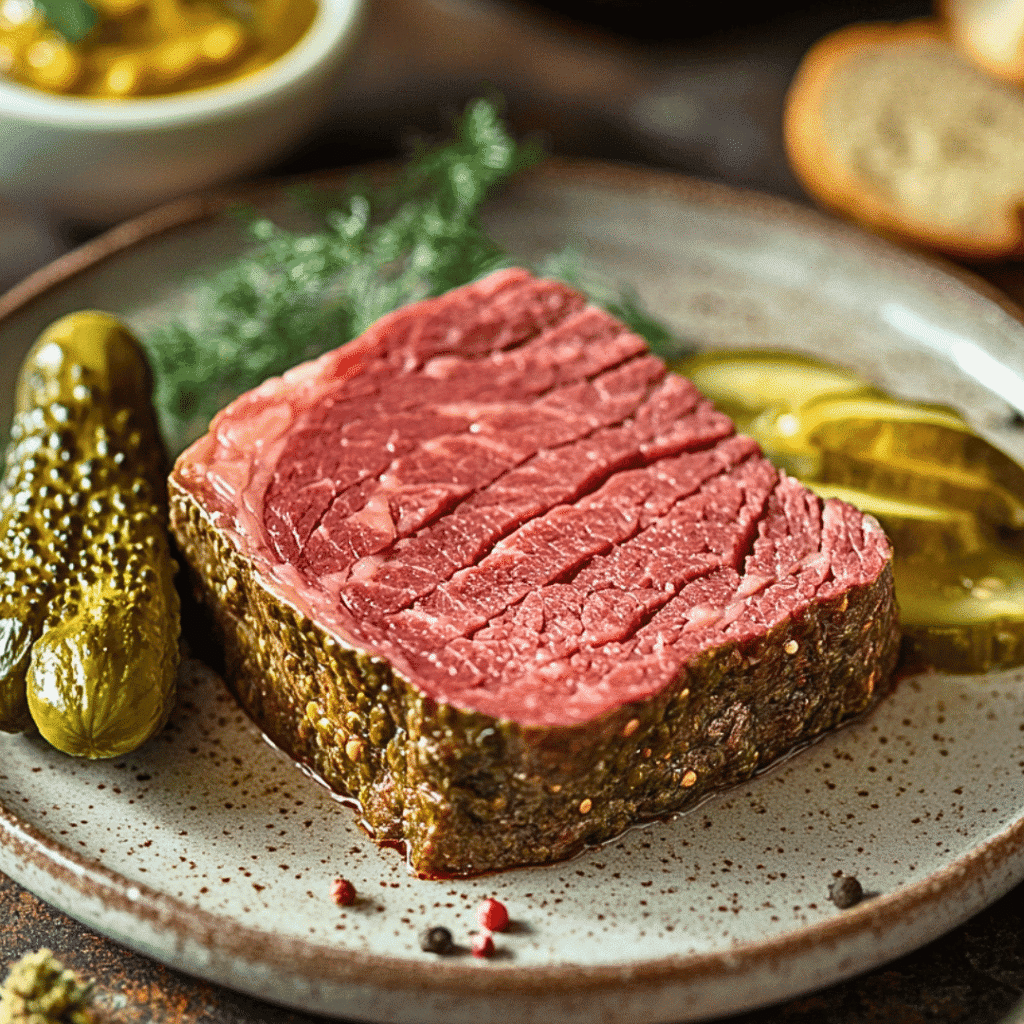
Salt, Myths & Gordon Ramsay’s Take on Sous Vide
Should You Salt Before Cooking Sous Vide?
One of the most common questions about salt beef sous vide is whether to salt before or after cooking. With beef that’s already been wet-brined for days, the answer is no—you don’t need to add more salt before it hits the water bath. In fact, over-salting is one of the few ways you can mess up this process. After brining, rinse your meat thoroughly and pat it dry. That brine did its job already.
If you’re doing a dry-cure version of salt beef sous vide (rubbing salt and spices directly on the meat), timing matters. You’ll want to let the rub sit for at least 24–48 hours in the fridge to mimic that deep flavor development, then vacuum seal and cook. But again—salt beef sous vide shines because it’s nearly foolproof when done right.
Gordon Ramsay used to knock sous vide, calling it a “lazy” chef’s trick. But in recent years, even he’s admitted that sous vide techniques deliver incredibly precise, restaurant-quality results. In fact, several of Ramsay’s restaurants quietly rely on sous vide for consistency across dishes that require delicate timing. In short, salt beef sous vide isn’t a shortcut—it’s a strategy.
Want to read more about how professional chefs use sous vide behind the scenes? This Serious Eats article on sous vide myths clears up a ton of misconceptions. And if you’re wondering what Ramsay really thinks now, this interview from MasterClass about sous vide offers some chef-approved insights.
Storing and Reheating Salt Beef Sous Vide
Leftovers? Lucky you. Salt beef sous vide holds up beautifully for meal prep. Once cooled, keep it sealed and refrigerate for up to a week. Reheat gently in the same sous vide bath at the temp you cooked it—no drying out, no rubbery texture.
This method works whether you’re saving whole pieces or individual sandwich-ready slices. I even vacuum seal smaller portions, freeze them, and drop them back into a 135°F bath for reheating when cravings strike. It’s flexible, easy, and still delivers that slow-cooked flavor and texture you expect from a good batch of salt beef sous vide.
Frequently Asked Questions About Salt Beef Sous Vide
Should you salt beef before sous vide?
If you’ve already brined the beef—whether using a wet brine or a dry rub—there’s no need to add additional salt before sous vide. In fact, over-salting can overpower the flavor. The brine penetrates deeply, and rinsing the beef before sealing helps balance it out for a perfect final result.
What is the salt to meat ratio for sous vide?
For dry brining, a good rule is to use 1.5% to 2% of the meat’s weight in salt. For wet brining, use 1 cup of kosher salt per gallon of water. This ensures your salt beef develops a deep flavor while still staying juicy and balanced once cooked sous vide.
What temperature is salt beef done?
Salt beef is technically safe to eat once it reaches 145°F, but for best texture, sous vide cooking at 135°F (57°C) to 155°F (68°C) for 48–72 hours is ideal. The long time at precise heat breaks down collagen slowly, giving you tender, flavorful meat every time.
What does Gordon Ramsay think of sous vide?
Although Gordon Ramsay was initially skeptical of sous vide, he’s since recognized its value in producing consistent, restaurant-quality dishes. In fact, many fine dining kitchens use sous vide—including his own restaurants. He’s even covered it in his own MasterClass, acknowledging its precision and efficiency.
There’s something deeply satisfying about mastering salt beef sous vide. It’s a dish that balances patience and technique—and rewards you with tenderness, rich flavor, and nostalgia in every bite. Whether you’re recreating a family tradition or discovering this method for the first time, this approach brings restaurant-quality results right into your home kitchen.
From the brine to the bath, each step is designed to bring out the best in your beef. And once you taste how effortlessly the sous vide method delivers, you’ll understand why even chefs like Gordon Ramsay have warmed up to it.
Craving more kitchen wins? Try my sous vide scallops next, or end your meal with something indulgent like Dubai chocolate bars. Until then—enjoy the bath, savor the slice.
Table of Contents
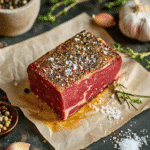
Salt Beef Sous Vide Recipe Card
- Total Time: 48 hours 20 minutes
- Yield: 6 servings 1x
- Diet: Gluten Free
Description
This salt beef sous vide recipe creates tender, juicy brisket with bold, brined flavor—perfect for hearty dinners or piled high on rye for a classic deli-style sandwich.
Ingredients
-
4–5 lb beef brisket (flat or point cut)
-
1 cup kosher salt
-
1 tablespoon pink curing salt (Prague Powder #1)
-
2 tablespoons brown sugar
-
1 tablespoon black peppercorns
-
1 tablespoon coriander seeds
-
4 cloves garlic, smashed
-
4 bay leaves
-
Water (enough to fully submerge the brisket)
Instructions
-
Prepare the brine:
In a large container, mix the kosher salt, curing salt, sugar, peppercorns, coriander, garlic, and bay leaves into cold water. -
Brine the brisket:
Place the beef into the brine and refrigerate for 5 to 7 days. Ensure it stays fully submerged (use a plate or weight if needed). -
Rinse and dry:
After brining, rinse the beef thoroughly under cold water and pat it completely dry with paper towels. -
Seal the beef:
Place the brisket in a vacuum-seal bag along with a few fresh bay leaves and garlic. Seal tightly. -
Sous vide cooking:
Preheat your water bath to 155°F (68°C). Submerge the bag and cook for 48 hours. -
Rest and sear:
Once done, let the meat rest in the bag for 10 minutes. Remove, dry the surface, and sear lightly in a hot pan to enhance aroma and color.
-
Slice and serve:
Cut the brisket across the grain. Serve hot with mustard and rye bread or chill for slicing later.
Notes
-
You can substitute with 135°F for 72 hours for a firmer, slicable result.
-
If using dry brine, apply salt rub and refrigerate for 48 hours instead of using a wet brine.
-
Salt beef sous vide freezes well—vacuum seal leftovers in portions and reheat in the sous vide bath.
- Prep Time: 20 minutes
- Cook Time: 48 hours
Nutrition
- Serving Size: 6 oz per person
- Calories: 320
- Sugar: 2g
- Sodium: 1300mg
- Fat: 20g
- Saturated Fat: 7g
- Unsaturated Fat: 12g
- Trans Fat: 0g
- Carbohydrates: 3g
- Fiber: 0g
- Protein: 28g
- Cholesterol: 95mg

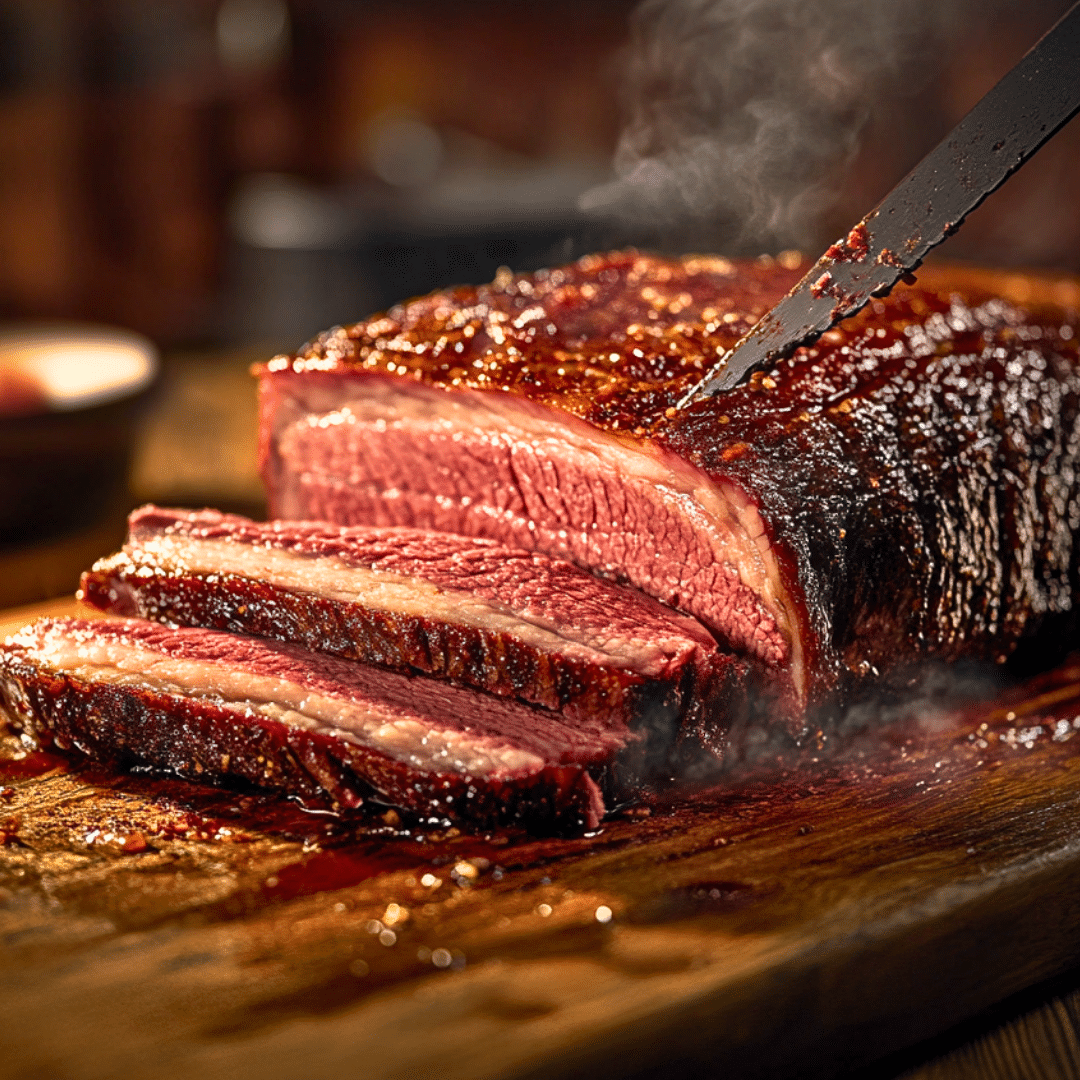





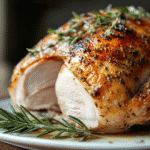
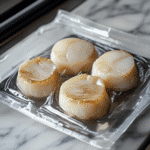
8 Comments
Comments are closed.